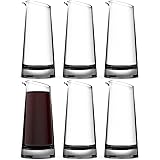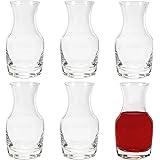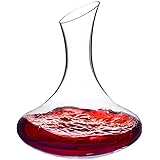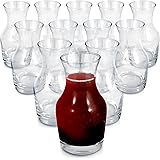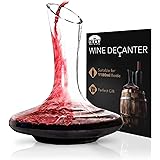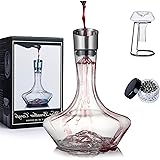Mastering the Art of Food and Wine Pairing: Avoiding Common Pitfalls for Elevated Dining
Imagine this: a meticulously prepared dinner, the aroma filling the air, and a carefully chosen bottle of wine breathing on the table. The first bite is taken, followed by a sip, and then… disappointment. Perhaps the wine suddenly tastes bitter, or the food seems bland. These culinary missteps are often the result of common food and wine pairing mistakes, and as highlighted in the insightful video above, understanding these pitfalls can transform a good meal into a truly extraordinary experience.
While the realm of wine and food combinations is often seen as deeply personal and subjective, a foundational understanding of the principles at play can elevate one’s dining encounters significantly. It is not about adhering to rigid rules, but rather understanding the logic that underpins successful pairings, thereby enabling more informed choices—and perhaps, more daring experiments. This guide delves deeper into the most frequent missteps, offering a practical framework for avoiding them and enhancing your culinary journey.
The Sweet Dilemma: Dessert Wines and the Quest for Balance
One of the most frequently encountered wine pairing mistakes, particularly concerning desserts, involves the sweetness levels of the wine and the dish. A common assumption is that a less sweet wine will provide a refreshing contrast to a rich dessert. However, this approach often leads to an undesirable outcome where the wine’s intrinsic sweetness is overshadowed, causing it to appear tart, overly acidic, or even unpleasantly bitter.
The cardinal rule here is elegantly simple: the wine should always be sweeter than the dessert it accompanies. This principle ensures that the wine’s sweetness is perceived correctly, creating a harmonious balance rather than a jarring contrast. For instance, in a dessert and wine pairing masterclass, it was observed firsthand that the most successful combinations consistently involved the sweetest wines, even when paired with intensely sugary desserts. These sweeter wines are frequently endowed with excellent acidity, which provides the necessary refreshment and prevents the palate from feeling overwhelmed, leading to a much more pleasant aftertaste. Think of a rich chocolate torte being met with a luscious Banyuls or a vibrant Sauternes, where each component elevates the other, rather than diminishing it.
Navigating the Waters: Red Wine with Fish and the Metallic Trap
The classic admonition against pairing full-bodied red wine with fish or seafood has become somewhat controversial in modern culinary circles, where challenging traditional norms is often celebrated. However, there is a substantial truth behind this long-held guideline, especially when considering delicate seafood or oily fish. The primary concern is twofold: flavor overpowering and a peculiar chemical reaction.
Many seafood dishes, such as Dover Sole, are prized for their mild, delicate flavors. Such subtleties are easily overwhelmed by the robust character of a rich, oak-aged red wine, much like a whispered secret might be lost in a boisterous crowd. Beyond flavor, a more scientific interaction often occurs: the tannins present in red wine can react with the natural oils found in certain fish, particularly oily varieties like salmon or mackerel. This chemical interplay is known to produce an unpleasant metallic aftertaste, which can spoil an otherwise enjoyable meal. While individual sensitivity to this phenomenon varies, for those who experience it, the effect can be quite distinct and detract significantly from the dining experience. Should a red wine be absolutely desired with fish, it is generally recommended that a lighter-bodied red with higher acidity and lower tannin levels be chosen. Varieties such as Pinot Noir or Gamay are often considered safer choices, as their softer structure is less likely to clash.
The Liquid Challenge: Pairing Wine with Hot Soups
The task of pairing wine with soup, particularly hot soup, is widely acknowledged as one of the more formidable challenges in the world of culinary matchmaking. Unlike stews, which are often rich and textured, soups present a unique dilemma: how to effectively pair a liquid with another liquid, especially when one is hot and the other is cold or at room temperature. This inherent temperature disparity introduces an immediate imbalance that can be difficult to overcome, affecting both the perceived flavor and temperature on the palate.
Despite the myriad of conflicting suggestions found across the internet, ranging from robust Cabernet Sauvignon to delicate Rieslings, a more nuanced approach is often required. A safer and more consistently rewarding strategy involves seeking out wines that possess inherent saltiness or a vibrant acidity that can cut through the soup’s richness. Dry, biologically aged sherries, for instance, are known to perform miracles with many soups, offering not only a unique savory quality but also a warming sensation from their fortified alcohol content. Similarly, crisp, acidity-driven coastal white wines from regions like Rías Baixas, Vinho Verde, or the Azores can provide an invigorating counterpoint to savory broths. For heartier, stew-like soups with deeper savory profiles, a medium-bodied red wine might find its place, mirroring the soup’s intensity without clashing.
Beyond Complementary: The Allure of Opposites in Pairing
The conventional wisdom of food and wine pairing often dictates that components should complement each other, sharing similar richness and intensity of flavors. This logical approach suggests pairing rich foods with full-bodied wines and delicate dishes with lighter styles. While this strategy frequently yields pleasant results, some of the most memorable and extraordinary pairings emerge when opposites are boldly explored, creating a captivating tension that elevates both the food and the wine.
Consider the classic combination of an intense, creamy, salty blue cheese alongside a rich and opulent vintage port. In terms of weight and intensity, these two elements are remarkably similar, yet their flavor profiles stand in stark contrast: one is savory and lactic, the other is sweet and fortified. The magic lies in how the sweetness of the port perfectly balances the saltiness and pungency of the cheese, creating a symphony of flavors on the palate. Such a pairing is not merely complementary; it is transformative. Another exquisite example is the pairing of rich, sweet-tasting lobster served with a luxurious butter sauce with an ultra-dry, acidity-driven, and crisp Champagne. Here, the Champagne’s electrifying acidity acts as a refreshing counterpoint to the lobster’s richness, cleansing the palate and preparing it for the next decadent bite. The philosophy of “opposites attract” in wine and food matching can unlock surprising and delightful sensory experiences.
The Ultimate Pairing Insight: Understanding Before Breaking the Rules
It is almost paradoxical to delve into common food and wine pairing mistakes while simultaneously advocating for a less rigid approach to these guidelines. Yet, this apparent contradiction holds the most crucial insight: the true art of pairing is not about blindly following or breaking rules, but about understanding the underlying logic and science behind them. The established principles were not created arbitrarily by “wine people” to impose strictures; rather, they evolved from countless experiences demonstrating what works well and, crucially, what often goes awry.
Just as an artist must first master the fundamentals of drawing and composition before creating truly innovative and rule-bending masterpieces, so too must a culinary enthusiast grasp the foundational concepts of wine and food interaction. This understanding provides the freedom to confidently deviate from tradition, knowing *why* a particular rule exists and what the potential consequences of breaking it might be. It transforms blind adherence or rebellion into informed exploration, turning every meal into an exciting opportunity for discovery. By learning the “rules,” one becomes empowered to break them intelligently, fostering a richer, more personal, and undeniably more enjoyable journey through the world of food and wine pairing.


